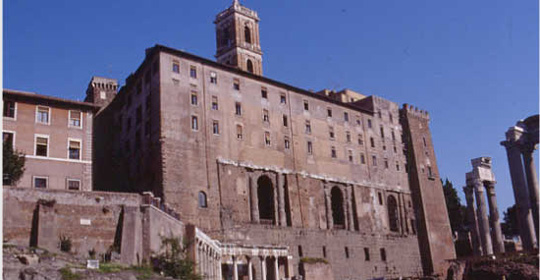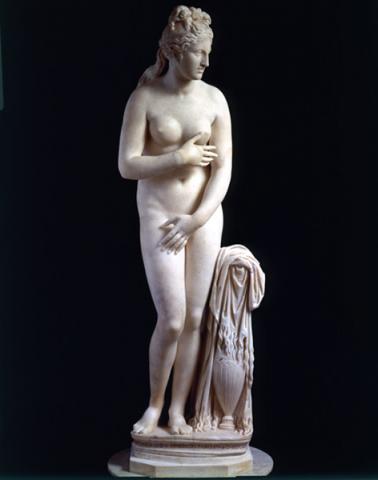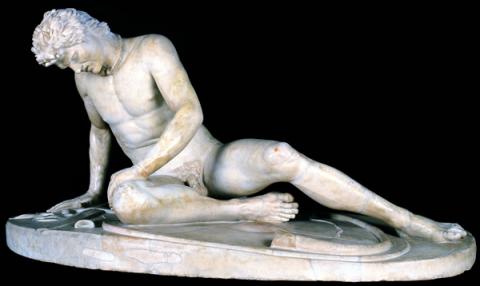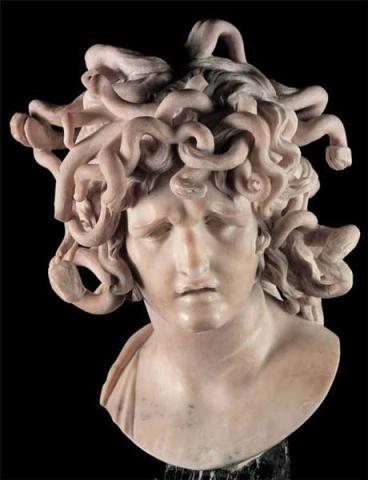Tabularium
The remains of the Tabularium, an imposing Late Republican Age building lie underneath the Palazzo Senatorio.
In Roman times its was used for the conservation of the bronze tabulae containing the laws and the official deeds of the Roman State.
The building was completed by Quintus Lutatius Catulus, Consul in 78 BC, as part of a programme of public works for the redevelopment of the Capitoline Hill, which in 83 BC had suffered a great fire. The works are commemorated in an inscription, still visible in the XV century but now lost, which passed down the building's ancient name (Tabularium). A similar, albeit more fragmented, inscription can be found on the squared blocks of tufa-stone on the outside of the monument, on Via di S. Pietro in Carcere.
Set on a tall basement, up against the side of the hill on the level of the Forum, was the actual multi-storey building itself, looking out over the piazza behind, which occupied the area between the two heights of the Capitoline Hill.

The greatest respect was held for the already-existing temple of Veiovis , whose area on the western corner of the Tabularium was delimited by a four-sided indentation.
The narrow corridor on the first floor, illuminated by rectangular openings hewn out of the sturdy basement, is covered by a pavilion-vaulted gallery with large archways framed by architectural features; the gallery can still be visited and is well preserved.
We might also assume the existence of yet another upper floor, which probably housed the public archives.
A steep staircase inside the basement, access to which was later sealed off on account of its being covered by the podium of the temple of Vespasian and Titus, joined the Forum level to the temple of Veiovis, while a second staircase led to the upper floor of the Tabularium.
In the Middle Ages a fortress was built over the remains of the Tabularium, and this was later transformed into the Palazzo Senatorio.
Since then, the building has been used for functions associated with the city's administration.
Some of these rooms were used from between the XIV and the XVII centuries for the storage and sale of salt, while other areas were used as prison cells right up until the middle of the XIX century.












































